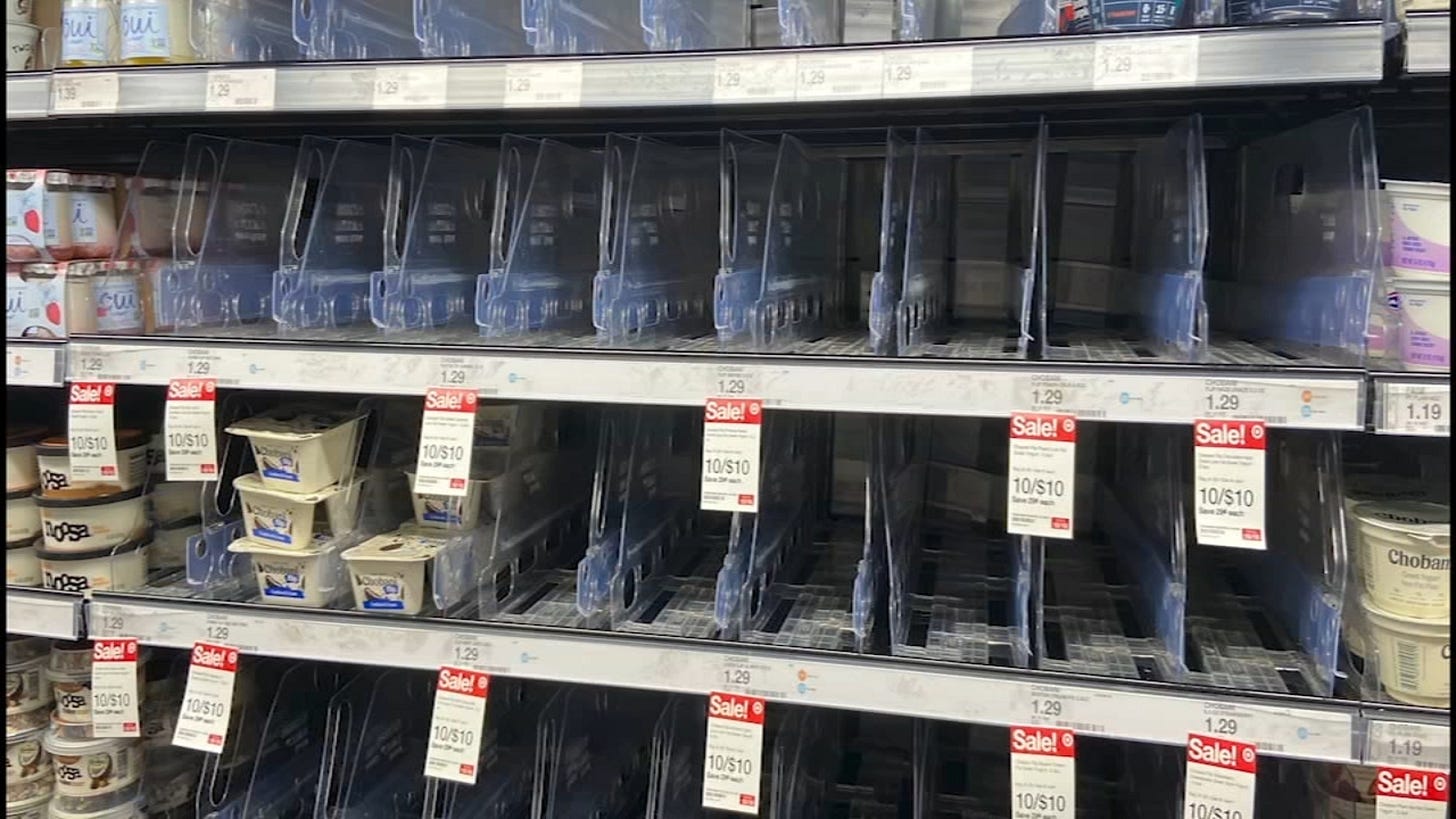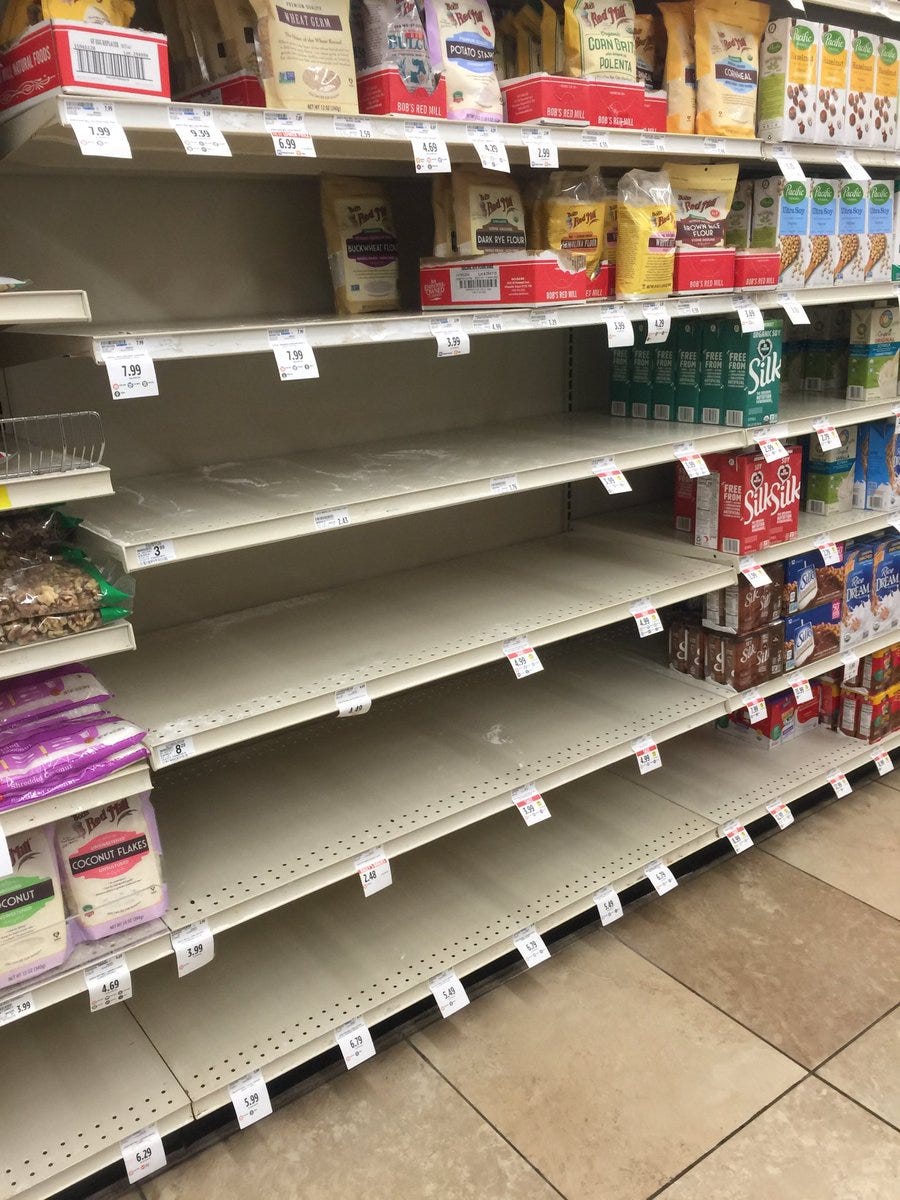The Future of Food (pt. 3): Supply Chains
As someone working in the retail industry, specifically the running shoe industry, something that has been on my mind for the past year-ish is the supply chain issue. A supply chain, in this instance, refers to the network between a company and its suppliers to its consumers.
Since the beginning of the pandemic, supply chains have all taken a hit as COVID-19 restrictions have slowed production of materials and shipping has been delayed. For example, during the week ending in October 3, 2021 18% of beverages, 15% of frozen foods, 16% of snacks, 15% of candy, and 18% of bakery items were out of stock compared to an average of 7-10% of products pre-pandemic. Additionally, it is not expected to improve any time soon.
If anything, this proves how fragile our food system is; we are overly reliant on the importing of goods as well as labor and fuel. To exacerbate the issue, demand has remained at very similar levels to pre-pandemic due to stimulus checks. Thus, due to a shortage in supply, prices have begun to go up. All items’ prices have ticked up 5.4% between August 2020 and August 2021, with grains’ prices going up 94% and meat prices increasing as well.
Ocean-going freight rates have also skyrocketed 460 percent over past 12 months, according to a report from August 2021. However, this increased reliance has posed barriers to smooth supply chain operation, which has been made evident with events such as the Suez Canal obstruction in early 2021.
Certain items have simply been unavailable at some points as well, such as flour and yeast during the 2020 lockdown. Some magazines began publishing recipes specifically without the two ingredients, giving their readers other baking options.
However, this is not sustainable; how will we, as a population, adapt to the absence of staples like flour and yeast? What is next in falling behind the supply chain?
We should all continue to follow this development as it is a good indicator of how industries will respond to increasing demand from growing populations. Will we be able to supply future generations in the same way that we have been throughout the past few decades? If not, how are we going to reformulate and restructure some of our systems?





